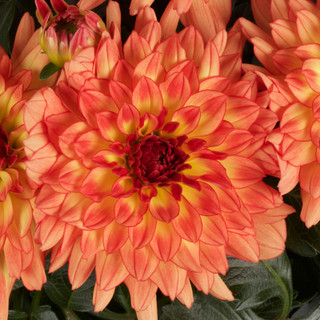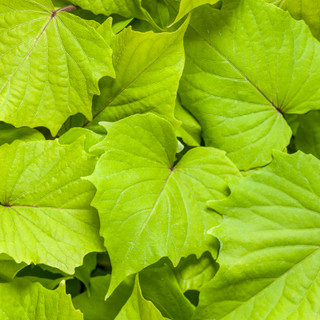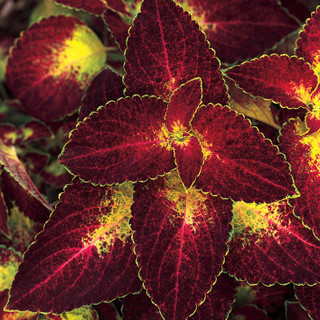
Vinca
Vinca plants (also called periwinkle) are excellent container fillers to add to the garden, in containers, hanging baskets, window boxes, or in flower beds each year. They bloom from spring through early summer and into fall with tiny pinwheel-shaped flowers.
Why Buy Vinca Online
Vinca, also commonly called periwinkle, is grown for its shiny foliage, ability to fill or spread, and delicate pinwheel-like flowers. Some varieties grow as annuals in colder regions, while others are perennials, coming back each year in zones 4 through 9. We offer several annual vinca varieties with flowers in pinks, purples, and whites. We also have variegated vinca vines for sale, and their vine-like stems add interest to hanging baskets and containers.
Container filler and spiller
Low border or filler in garden beds
Available in several flower colors & with variegated foliage
Typically 6 inches high and mounding or trailing growth
Growing zones 7 to 11, depending on variety
About Vinca

Periwinkle, Creeping Myrtle
Europe, North Africa, and parts of Asia
Annuals
Evergreen, Herbaceous
4 - 9
Blue, Purple, Lavender, White, Pink
Spring through Early Summer
Trailing, Spreading, Clumping
Bees
Drought, Partial Shade, Poor Soil, Urban Conditions
Deer, Rabbits, Erosion
How To Use Vinca In The Garden
Vinca is widely known for its ovate leaves, small, star-shaped flowers, and easy care. It can tolerate a wide range of soil conditions and partial shade, making it extremely useful for low-maintenance landscaping. Annual varieties (Catharanthus) are pretty fillers for garden beds or container gardens, and typically reach only about 6 inches high. Perennial vinca forms a mat of evergreen leaves and purple flowers and makes an effective groundcover.
Ideal for erosion control, perennial vinca can stabilize slopes and embankments with its dense, mat-like growth. It also serves as an attractive underplanting for taller shrubs and trees, creating a layered effect. Plant annual vinca in a hanging basket, allowing the stems to spill over the sides with small flowers or variegated foliage. It can be used as filler in a patio container around taller flowers or grasses. Vinca adapts to various design needs and is rarely bothered by rabbits or deer.
Types of Vinca
| Type | Scientific Name | Flowers | Bloom Time | USDA Zones | Habit / Form | Uses |
|---|---|---|---|---|---|---|
| Annual Vinca (Madagascar periwinkle) |
Catharanthus roseus | Pinwheel blooms in white, pink, red, lavender, salmon, bicolors | Late May – frost (continuous) | 10–11 (perennial) | Dense, rounded or trailing, evergreen annual | Mass bedding, edging, containers, hanging baskets; hot-sun color; pollinator gardens |
| Perennial Vinca (Lesser periwinkle) |
Vinca minor | 1 in violet-purple, blue or white blooms | March–April; occasional fall flush | 4–8 | Low, evergreen, mat-forming groundcover | Shade groundcover, erosion control, under trees, slopes, between bulbs |
| Perennial Vinca (Greater periwinkle) |
Vinca major | 1–2 in blue (occasionally white) funnel-shaped flowers | Early spring, then sporadically summer–fall | 7–9 (container outside zone) | Vigorous, evergreen, trailing; stems root at nodes; forms mounds | Fast groundcover, cascading from walls & containers, erosion control |
Vinca Care
Vinca requires well-draining soil and a sunny to partially shaded location for optimal growth. When planting, space them about 8 to 12 inches apart to allow proper airflow and prevent overcrowding. Although the plants can handle drought, they perform best with regular watering. Fertilize sparingly using a balanced fertilizer about once a month.
Regular pruning helps maintain a neat appearance and encourages new growth. Trim back leggy stems or spent flowers throughout the growing season. For winter care, perennial vinca is frost hardy but may need protection or mulch in colder zones. Vinca grows readily in containers with a well-draining potting mix and drainage holes. Monitor soil moisture carefully, as containers can dry out faster than garden beds.
Learn More About Vinca Care

Vinca Companion Plants
Plants that go well with annual vincas are other annual plants grown for color and foliage. In full sun, pair vinca with sweet potato vines, dahlias, coleus, or snapdragons.










